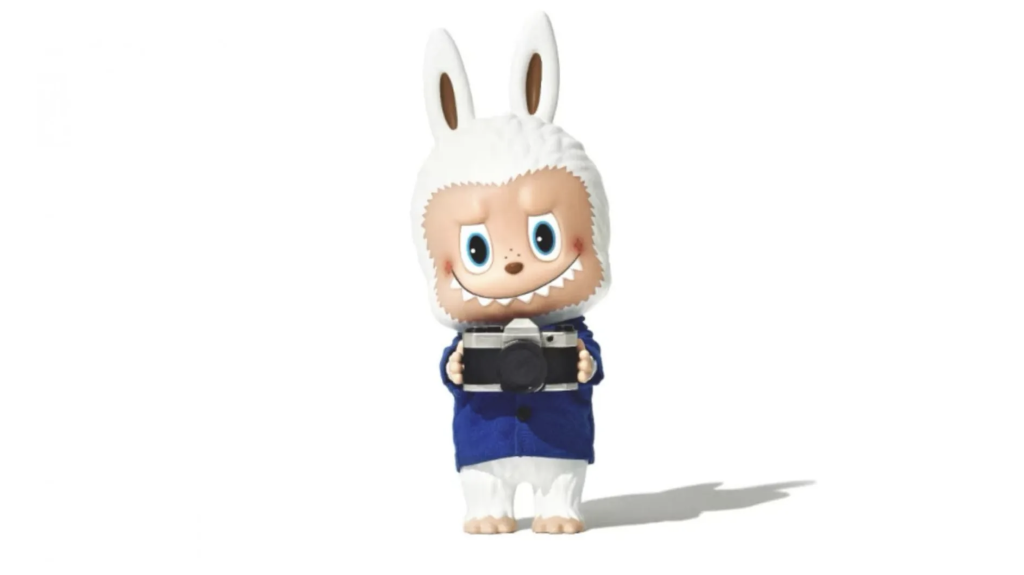The world went wild when ZARA, the top fast-fashion brand, announced it would collaborate with Kasing Lung’s Labubu for its 50th anniversary. The fun character Labubu, a naughty creature loved by pop culture fans, collectors, and toy lovers, became the face of one of ZARA‘s most talked-about campaigns. This partnership wasn’t just about fashion; it was also about nostalgia, virality, and the changing psychology of today’s shoppers.

Labubu’s Rise: From Toy Store to Cultural Icon
Hong Kong artist Kasing Lung made Labubu as part of the collectible art toy scene, but it quickly became a cultural phenomenon. The internet loved its strange design, which was a mix of cuteness and chaos. Labubu was the perfect symbol for the Gen Z and Millennial mindset because it was fun, imperfect, and emotionally expressive. In a world where looks and feelings are what matter most when sharing online, Labubu was the perfect symbol. ZARA‘s decision to combine its global fashion empire with this small but powerful character was more than just a design choice; it was a brilliant marketing move. ZARA used the power of community, a driving force behind today’s viral marketing, by linking its brand to an existing fan base.
Viral Marketing: Where Culture and Business Meet
It’s not just about luck or jumping on trends when it comes to viral marketing. You need to know how to spread emotion and engagement online. The Labubu collaboration used four key factors that make things go viral:
- Nostalgia and Collectibility: The collaboration brought back memories for people who grew up with designer toys, making ZARA‘s drop more than just another launch; it was an emotional event.
- Limited Availability: People want things that are hard to get. ZARA sparked FOMO (Fear of Missing Out), a major driver of online hype, by saying the collection would be available in limited quantities.
- Shareability: The funny pictures of Labubu in ZARA clothes were ready to be turned into memes. Social media loves stories told through images, and this partnership gave us many opportunities to create content.
- Community Endorsement: ZARA didn’t need traditional ads for their collaboration; fans did the work. Micro-influencers, toy collectors, and fashion communities spread the news about the drop on TikTok, Instagram, and Weibo, turning it into a global conversation.
ZARA used these strategies to show what viral marketing is all about: turning feelings into interest and interest into demand.
The Psychology of Things That Don’t Last Long
Things like Labubu are interesting because they can rise sharply in a short time and then just as quickly go away. This is how virality works in the digital age. People today are always looking for something new and exciting, even before the last one fades away. But the difference between a short-lived trend and a long-lasting cultural symbol lies in how they are managed. Brands can turn temporary virality into long-term brand equity by telling stories that go beyond the initial excitement, such as through experiential campaigns, co-branded products, or deeper emotional narratives. For instance, Nike’s work with Off-White didn’t just sell shoes; it changed a whole subculture. LEGO’s partnerships with movies and designers also turned a toy for kids into a brand for people of all ages. If ZARA uses Labubu in more experiential marketing campaigns or enhanced shopping experiences in the future, this could turn from a viral moment into a long-term brand milestone.
From Moments That Go Viral to Brands That Last
Marketers and brand managers should learn from this: viral events are not accidents; they are meticulously planned ways for people to connect. A mix of timing, emotion, and authenticity is what makes every successful viral campaign, from Barbiecore to Labubu. The hard part isn’t making the spark; it’s keeping the flame going. Brands that turn viral popularity into long-term relevance are experts at narrative continuity, meaning they can keep their message evolving while maintaining the emotional connection. The Labubu collaboration with ZARA is more than just a campaign; it’s a reminder that the future of fashion marketing is in stories that move people, not just things.
References
Prestige Online. (2025, October 21). ZARA will release a limited Labubu for its 50th anniversary. Prestige Online Singapore. https://www.prestigeonline.com/sg/style/fashion/zara-50th-anniversary-kasing-lung-labubu/
Berger, J. (2013). Contagious: Why things catch on. Simon & Schuster.
Kapferer, J.-N., & Bastien, V. (2020). The luxury strategy: Break the rules of marketing to build luxury brands (3rd ed.). Kogan Page.
Solomon, M. R. (2023). Consumer behavior: Buying, having, and being (14th ed.). Pearson.
Gretzel, U., Sigala, M., & Xiang, Z. (2021). Social media in travel, tourism and hospitality: Theory, practice and cases (2nd ed.). Routledge.







